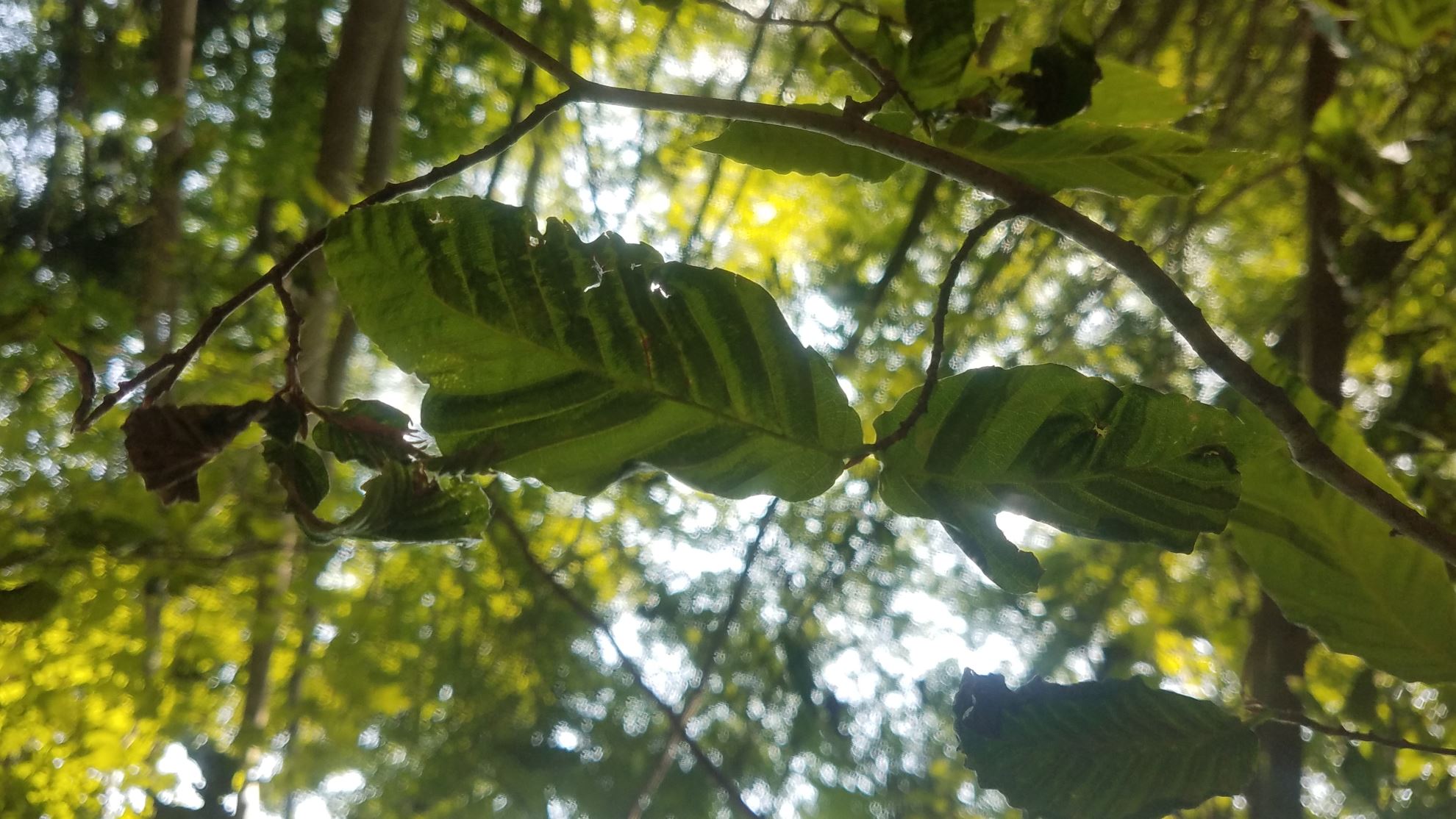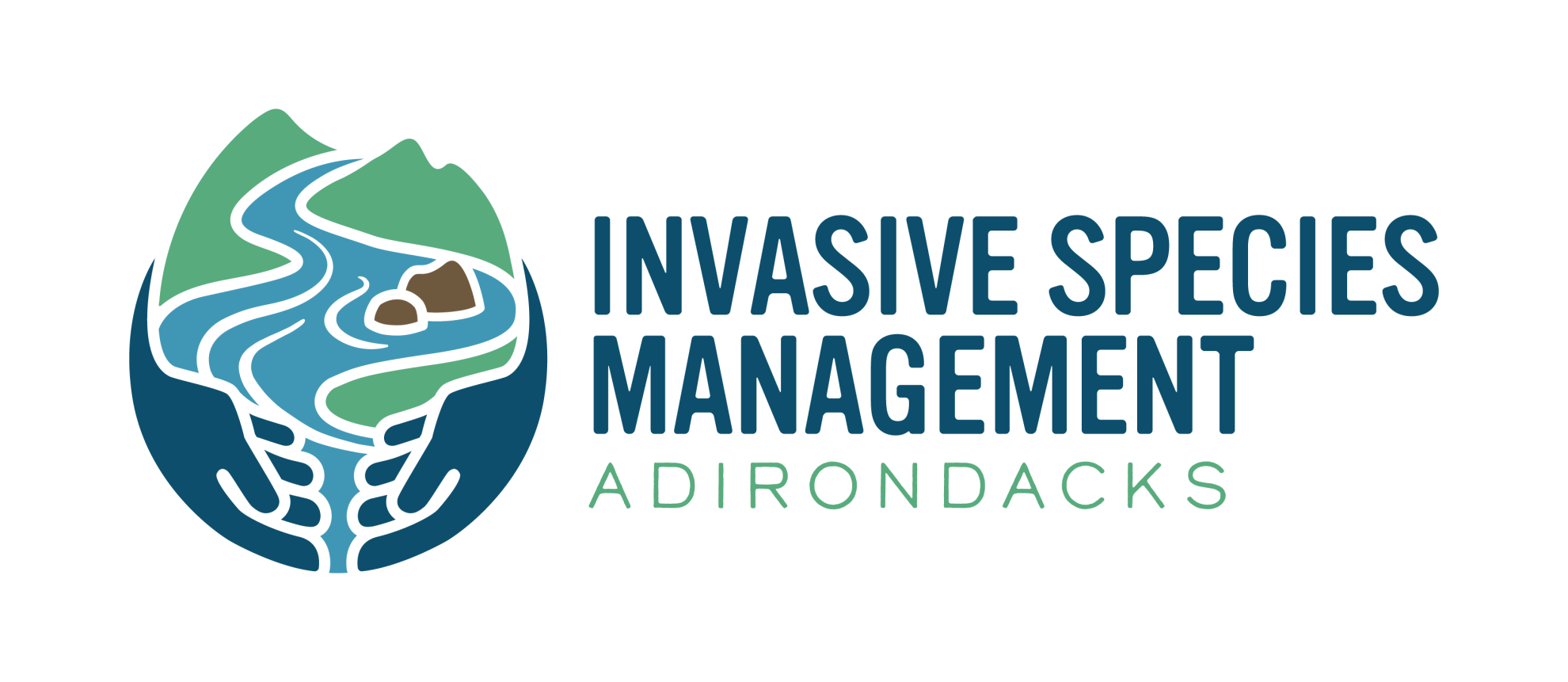Searching for Answers on Beech Leaf Disease

Searching for Answers on Beech Leaf Disease
Southern NY counties report devastating effects of BLD; APIPP seeking volunteers to identify and report the invasive forest pest
KEENE VALLEY – The Nature Conservancy’s Adirondack Park Invasive Plant Program (APIPP) is seeking volunteers to identify and report any occurrences of beech leaf disease in the Adirondack Park.
Monitoring for this newly emerging invasive forest pest will begin on Aug. 2 with a free online training from 10-11:30 a.m. called “Forest Pest Hunters: Surveying for Beech Leaf Disease” and continue through October 10.
The first confirmed case of beech leaf disease (BLD) in the Adirondacks was in Herkimer County in 2022; it was first confirmed in the U.S. in 2012.
“With most invasive species, we understand how they spread and how to manage infestations of the plant or animal,” said APIPP Terrestrial Invasive Species Coordinator Becca Bernacki. “Beech leaf disease is different—we don’t know what causes it, how it spreads, or how to manage it, which is why it’s so important for scientists to have as much data as possible about where it is and what its impacts are.”
One thing scientists do know is how devastating BLD is to forests. It can eventually kill affected trees, with current data from the Midwest showing that saplings die after a few years and mature trees die in six to 10 years.
The disease also moves fast. It was first confirmed in New York’s Westchester and Rockland counties in 2019, and since then its symptoms—which include dark striping between the leaf veins, leaf curling, and a leathery leaf texture—have been found on beech trees throughout that region.
“We’ve seen almost 100 percent transmission within forest stands where BLD is established in the Lower Hudson Valley. I don’t think we’ve received a single report of a beech tree stand that is symptom-free in Westchester County, for example,” said Brent Boscarino, Coordinator of the Lower Hudson Partnership for Regional Invasive Species Management (PRISM). Lower Hudson and APIPP are two of the eight PRISMs in New York state.
Boscarino said that BLD’s presence in his region came quickly, and scientists and volunteers have been working ever since to collect data and figure out how the disease is spreading from tree to tree and from stand to stand.
Scientists currently think BLD is linked to a nematode worm, but no one knows for sure if the worm is the full cause.
“It’s moving so fast, figuring out the vector of how the disease moves from one source to another is important,” Boscarino said. “The sooner we can figure out the vector, the sooner we can figure out treatment options.”
Boscarino said treatment and other management options are being studied, including protecting the forest understory by removing invasive species, planting native species, and experimenting with different soil combinations to keep BLD from killing the trees, which has produced mixed results.
But there is a bright side. Boscarino said it’s easy to train volunteers to look for BLD because the symptoms are so obvious. More data about how fast BLD spreads and where it is means a greater possibility that scientists will develop a way to manage or prevent the disease—and that’s where volunteers come in.
Community scientists, like those who participate in APIPP’s Forest Pest Hunters program, are invaluable to BLD research. By reporting where BLD is present in the Adirondacks and where it is not yet found, volunteers contribute data to the greater cause of protecting the region’s beech forests.
And it isn’t just about protecting beech trees. Since beech nuts are a major food producer for many Adirondack animals, a large die-off of these trees would mean a serious lack of sustenance for wildlife ranging from birds to bears.
“People are feeling hopeful,” Boscarino said. “By having volunteers monitoring for beech leaf disease, we will better enable managers to know which areas of the forest to prioritize for restoration and protection. We can build back the next generation of forests with good management practices.”
“Forest Pest Hunters: Surveying for Beech Leaf Disease” is 10-11:30 a.m. on Aug. 2 and is being co-sponsored by the Adirondack Mountain Club. To register for this free online training, visit www.adkinvasives.com/events.
For more information on APIPP’s Forest Pest Hunters program, visit www.adkinvasives.com/Get-Involved/Volunteer/Forest-Pest-Hunting.
APIPP’s mission is to work in partnership to minimize the impact of invasive species on the Adirondack region’s communities, lands, and waters. Learn more at www.adkinvasives.com.
###
The Adirondack Park Invasive Plant Program (APIPP) serves as the Adirondack Partnership for Regional Invasive Species Management (PRISM), one of eight partnerships across New York. APIPP is hosted by The Adirondack Chapter of The Nature Conservancy and receives financial support from the Environmental Protection Fund administered by New York State Department of Environmental Conservation.

